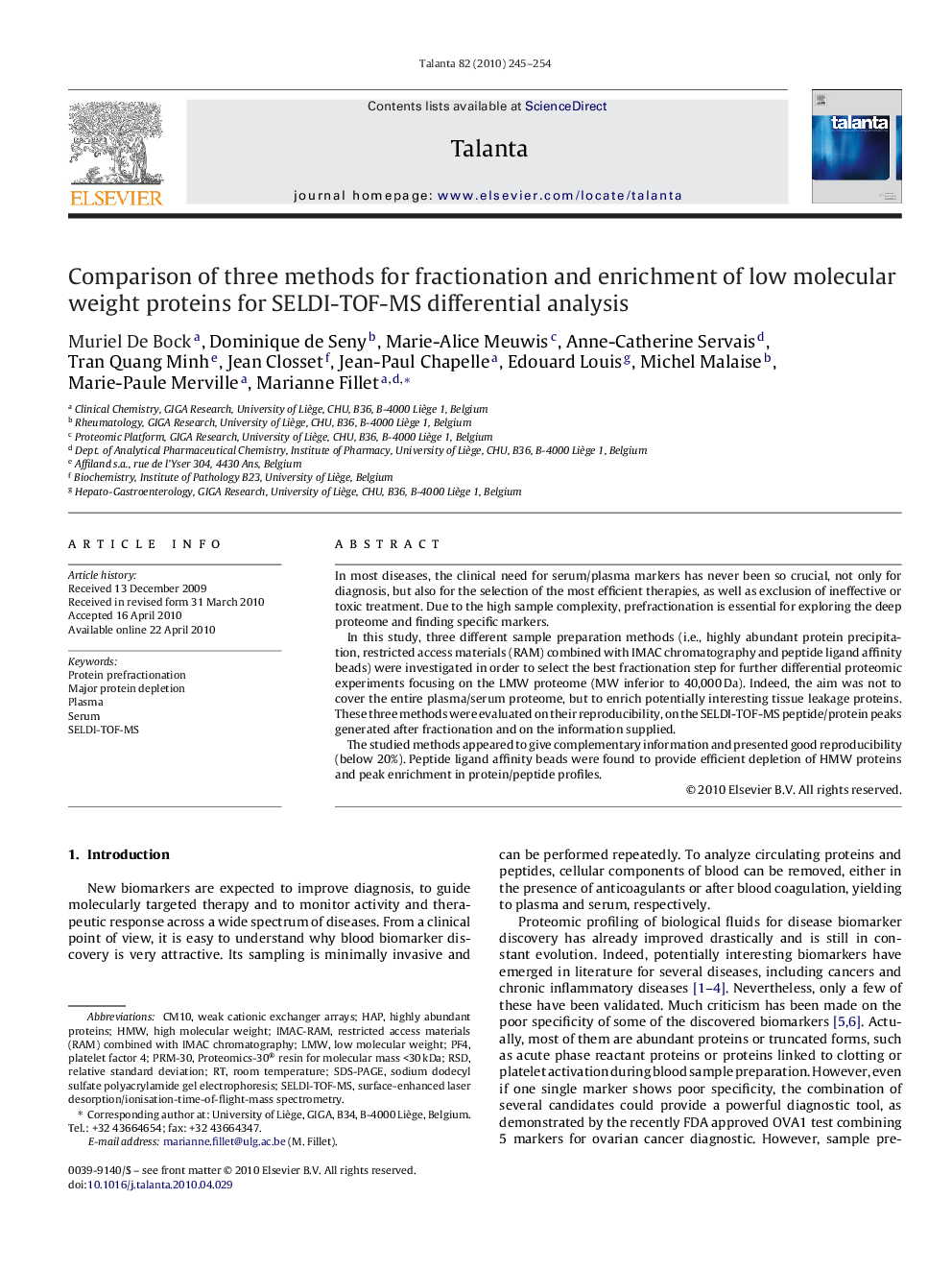| Article ID | Journal | Published Year | Pages | File Type |
|---|---|---|---|---|
| 1246355 | Talanta | 2010 | 10 Pages |
In most diseases, the clinical need for serum/plasma markers has never been so crucial, not only for diagnosis, but also for the selection of the most efficient therapies, as well as exclusion of ineffective or toxic treatment. Due to the high sample complexity, prefractionation is essential for exploring the deep proteome and finding specific markers.In this study, three different sample preparation methods (i.e., highly abundant protein precipitation, restricted access materials (RAM) combined with IMAC chromatography and peptide ligand affinity beads) were investigated in order to select the best fractionation step for further differential proteomic experiments focusing on the LMW proteome (MW inferior to 40,000 Da). Indeed, the aim was not to cover the entire plasma/serum proteome, but to enrich potentially interesting tissue leakage proteins. These three methods were evaluated on their reproducibility, on the SELDI-TOF-MS peptide/protein peaks generated after fractionation and on the information supplied.The studied methods appeared to give complementary information and presented good reproducibility (below 20%). Peptide ligand affinity beads were found to provide efficient depletion of HMW proteins and peak enrichment in protein/peptide profiles.
